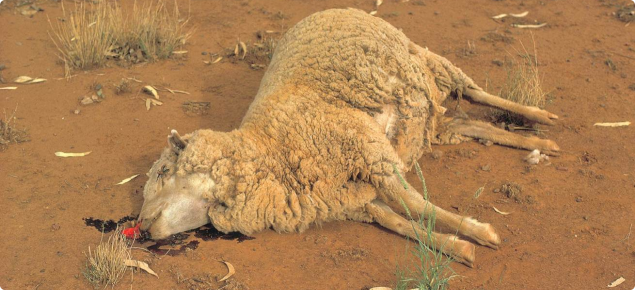What are Wild Dogs?
The term "wild dogs" refers to all wild-living dogs including pure-bred dingoes (Canis lupus dingo), free-living domestic dogs (Canis lupus familiaris) and their hybrids.
Why are they a pest?
Wild dogs attack livestock causing injury and death. These impacts are particularly pronounced for small stock, and can limit enterprise choices for producers. Wild dogs can also impact livestock producers through harassment of stock, reduced stock value due to bitten carcasses and costs of control. Further, wild dogs can act as vectors for endemic diseases such as hydatids and Neospora caninum. The impact of wild dogs on stock also has significant social impacts, with profound effects on landholders and communities.
National economic losses to the sheep industry associated with wild dogs have been conservatively estimated to exceed $20M per annum and estimated loss to the beef industry over $25M (Gong et al. 2009). Livestock losses to wild dogs in the WA rangelands between 2011 and 2013, as reported by the Western Australian Pastoral Lands Board, exceeded $6M per annum.
How do we control them?
The control of wild dogs in and near livestock grazing areas is the responsibility of the landowner. Techniques for the control of wild dogs include baiting with 1080 (sodium fluoroacetate) meat baits and to a lesser extent, trapping and shooting. Nationally there is an increasing focus on cell-fencing as a wild dog control technique.
The Western Australian Government supports producer groups controlling wild dogs and seeks to understand the potential costs, benefits and consequences of current control methods.
Increased knowledge of the costs, benefits and impacts of a suite of control measures on wild dog predation on livestock using data from specified management areas will provide for more informed decision making around the management of threats posed to the livestock industries by wild dogs.
What will the Evaluation of Wild Dog Control Measures do?
The Evaluation of Wild Dog Control Measures has provided an evaluation of the effectiveness of wild dog control techniques, including cell-fencing, in Western Australia’s southern rangelands. There were two key stages. Stage one estimated wild dog density in the study area and experimentally determined effectiveness of wild dog baiting techniques. Stage two developed a wild dog population model to determine the effort required to effectively control wild dogs under a suite of control scenarios.
Further information about the control methods for this declared pest can be found through the wild dog control link.



